PowerPoint 2010 -
Inserting Videos

PowerPoint 2010
Inserting Videos


/en/powerpoint2010/animating-text-and-objects/content/

PowerPoint allows you to insert a video directly into your presentation. You can even edit the video within PowerPoint and customize its appearance with a video style.
In this lesson, you will learn how to insert a video, edit it, and format its appearance.
Adding a video to your presentation can help emphasize certain points and provide an example. Once you add a video, you can edit it and format its appearance.
Optional: You can download this example for extra practice.
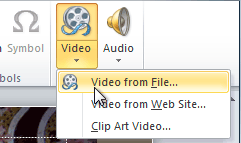 Inserting a video from a file
Inserting a video from a file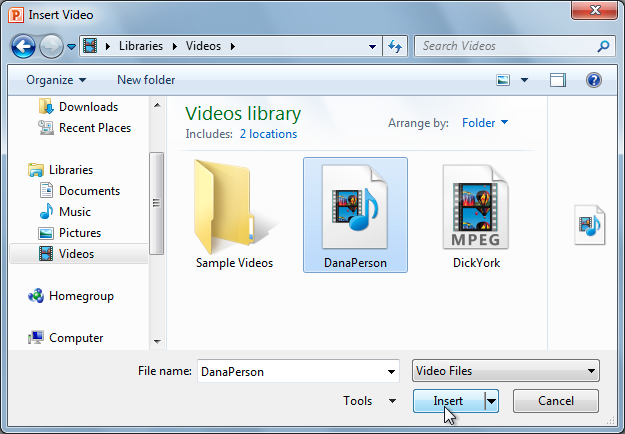 The Insert Video dialog box
The Insert Video dialog box The inserted video
The inserted videoSome websites—like YouTube—allow you to embed videos into your slides. An embedded video will still be hosted on its original website, meaning the video itself won't be added to your file. Embedding can be a convenient way to reduce the file size of your presentation, but you'll also need to be connected to the Internet for the video to play.
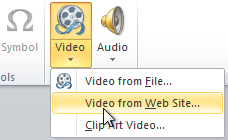 Inserting a video from a website
Inserting a video from a websiteWe have found that this feature no longer works in PowerPoint 2010. If you need to add an online video, you could insert a hyperlink to the video directly on your slide. Review our lesson on Hyperlinks and Action Buttons to learn how.
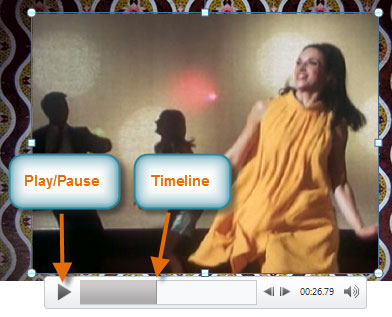 The Play/Pause button and the timeline
The Play/Pause button and the timeline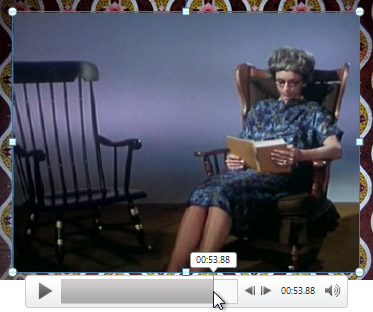 Clicking on the timeline
Clicking on the timeline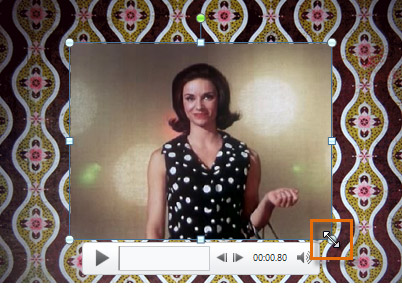 Resizing the video
Resizing the videoThe Playback tab has several options you can use to edit your video. For example, you can trim your video so it will only play an excerpt, add a fade in and fade out, and add bookmarks that allow you to jump to specific points in the video.
Most of the features on the Playback tab can only be used with videos that are inserted from a file. They will not work with embedded videos.
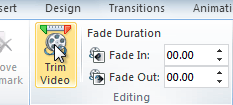 The Trim Video command
The Trim Video command Moving the green and red handles
Moving the green and red handles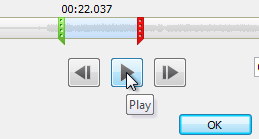 Previewing the video
Previewing the video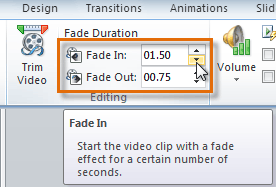 Adjusting the Fade In
Adjusting the Fade In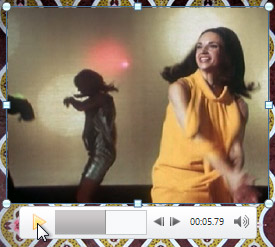 Locating the desired part of the video
Locating the desired part of the video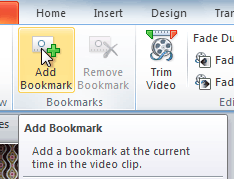 Adding a bookmark
Adding a bookmark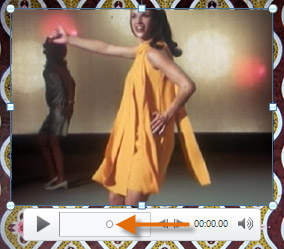 The new bookmark
The new bookmark Removing a bookmark
Removing a bookmark
There are other options you can set to control how your video plays. These are found in the Video Options group on the Playback tab.
 The Video Options group
The Video Options group
Much like pictures, PowerPoint allows you to format the appearance of a video by applying a video style, adding a border, changing the shape, applying effects such as 3D rotation, making image corrections, and adjusting the color. You can also add a poster frame, which is the placeholder image your audience will see before the video starts playing. The poster frame is often just a frame taken from the video itself, but you can also use a different image if you want.
 Adding a poster frame
Adding a poster frame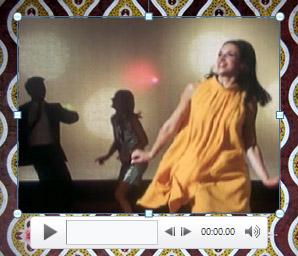 The new poster frame
The new poster frameIf you want to use a picture from your computer, you can select Image from file from the menu.
 Viewing all of the available styles
Viewing all of the available styles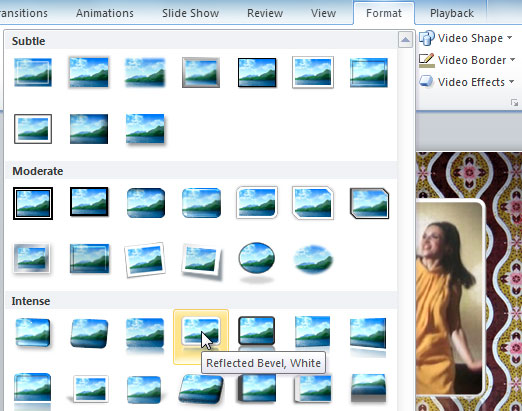 Selecting a Video Style
Selecting a Video Style The updated video
The updated videoFor information on corrections, color adjustments, borders, shapes, and effects, check out our lesson on Formatting Pictures.
/en/powerpoint2010/inserting-audio/content/